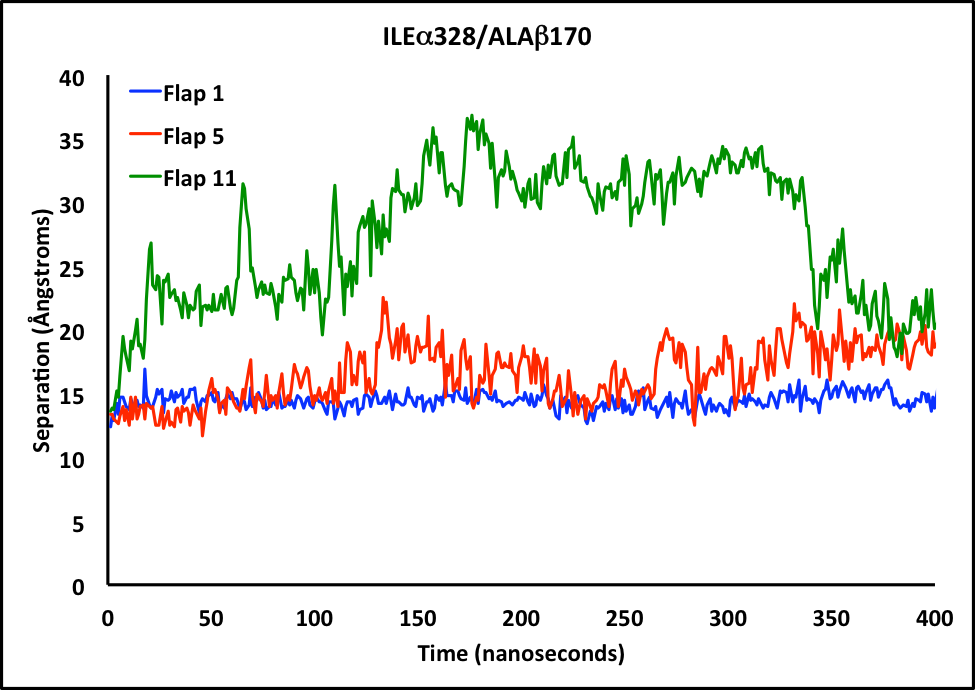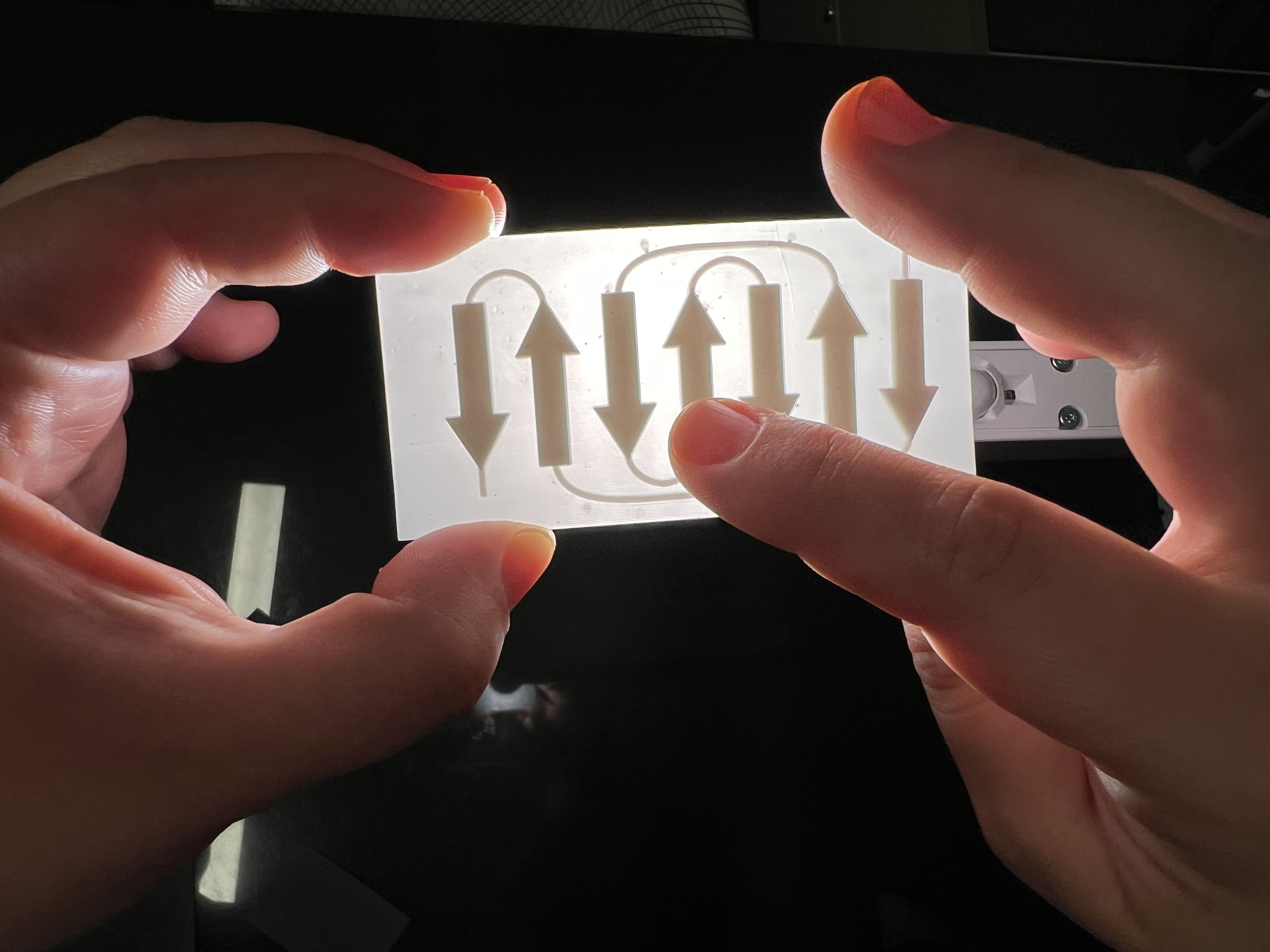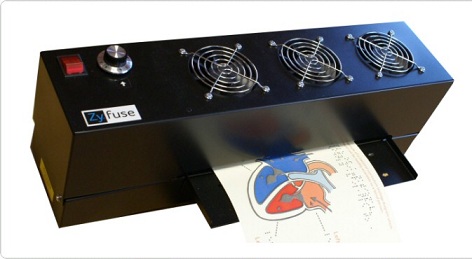Learning New Concepts
One primary challenge of my research is that another individual must visualize everything first. As a blind chemist, I require the assistance of access assistants for the greater part of my work. They represent the main conduit between research results and myself. Without creating a system for me to “look” at the results or data in a reasonable amount of time, research analysis can become a frustrating and time-consuming process. These are the methods I use to “see” complex output and trends:
Mathematical Approaches
In my graduate thesis, I focused on HP Urease, an enzyme with approximately 148,000 atoms. This massive system is difficult for a sighted person to analyze, let alone a blind individual. One technique I used was detailing motion in terms of distance, deviations, and radial distributions between set residue pairs, as shown in the figure below. Mapping movement mathematically allowed me to ask the access assistants very concrete questions. Thus, it became a matter of accessing data mathematically without lots of extraneous, complex visual factors.
I would ask my access assistants to describe any general trends: for example, the green line has a steep upward climb from 100 to 200 ns. This is a mathematical approach to understanding molecular motion that avoided visual dependence and instead utilized an access assistant’s detailing of minima, maxima, plateaus, and other features on a Cartesian plot. Mathematical approaches like this are often a good alternative for visually-impaired researchers, and can, as in the case of my project, lead to the discovery of patterns that sighted students pass over.

Researching with access assistants is more challenging than studying for classes because the correct answers are no longer written down on the page for access assistants to read. You are the brain responsible for analyzing information; you depend on your access assistants to receive that information. When they have no idea what they are looking at, you need to learn how to ask them the right questions to get the information you need.
I start by asking my access assistant to describe, to the best of their abilities, what they see, beginning with the big picture. Based on their answer, I hone in on details with more specific questions. Then, I develop hypotheses in my mind about what might have occurred in the experiment and use that as a starting point to ask precise questions that will supply information to confirm, deny, or redirect my hypothesis.
Analyzing results through another person’s eyes is a challenging activity, to be sure. The only way to get better at it is with time. You will learn from your experiences as you go along.
One of the most important aspects of research is keeping up to date on the current advances in your field. It is vital for me to know what research is being done and who is doing it. This is important to ensure that my work is novel and transformative, and to establish myself as an expert in a specific area.
In order to keep myself up to date, my access assistants help me to maintain a library of literature relevant to my work in EndNote. The assistants use keywords to conduct searches in Google Scholar, Web of Science, and other scientific databases to identify potentially relevant research. These works are incorporated into the EndNote library, which is shared with the research group. The abstracts of the papers are read by an assistant who will sort them into groups within the library and provide a brief summary of the abstract. By reviewing these abstracts with an assistant, I prioritize papers for audio recording and brainstorm ideas for future research topics.
Although I do utilize audio recordings of articles, it requires a large investment of time and there are many papers of interest (with new ones being published every day). Therefore, it is also helpful for me to obtain information in other ways. I have found it useful for my access assistants to read the literature and other background materials on a specific topic and prepare a presentation. He or she will then review their presentation with me, assisting me in quickly coming up to speed on a new area of interest. In addition, if he or she finds an interesting paper, the access assistant prepares and presents a literature talk on the paper at my research group meeting. This helps not only myself, but my students to learn about relevant work being done in the field.
A lithophane is a thin plaque of translucent material, normally porcelain, which has been moulded to varying thickness, such that when lit from behind the different thicknesses show as different shades, forming an image. Only when lit from behind does the image display properly.
Translucent Engravings Illuminating Data Lithophanes are thin, translucent engravings that appear opaque under ambient light but come to life when backlit. By scattering light through the material, lithophanes create variations in brightness that allow for the representation of complex data sets. They provide a high-resolution, tactile experience by utilizing materials such as plastics, ceramics, or even 3D-printed translucent filaments.

The Swell Form machine (often referred to as a fuser) is a simple, fast and low cost method of creating stunning tactile maps, diagrams, text and graphics. This machine has revolutionized the process of creating tactile images for the visually impaired.
Tactile Graphics through Heat-Induced Swelling Swell forms offer an alternative approach to translating 2D imagery into tactile representations. By printing black ink or toner on specialized paper embedded with micrometer-sized alcohol granules, heat is applied to induce swelling in the printed regions. This results in raised, foam-like textures that allow visually impaired individuals to feel and interpret the printed content. Swell forms are cost-effective and efficient, offering faster results compared to 3D printing.
